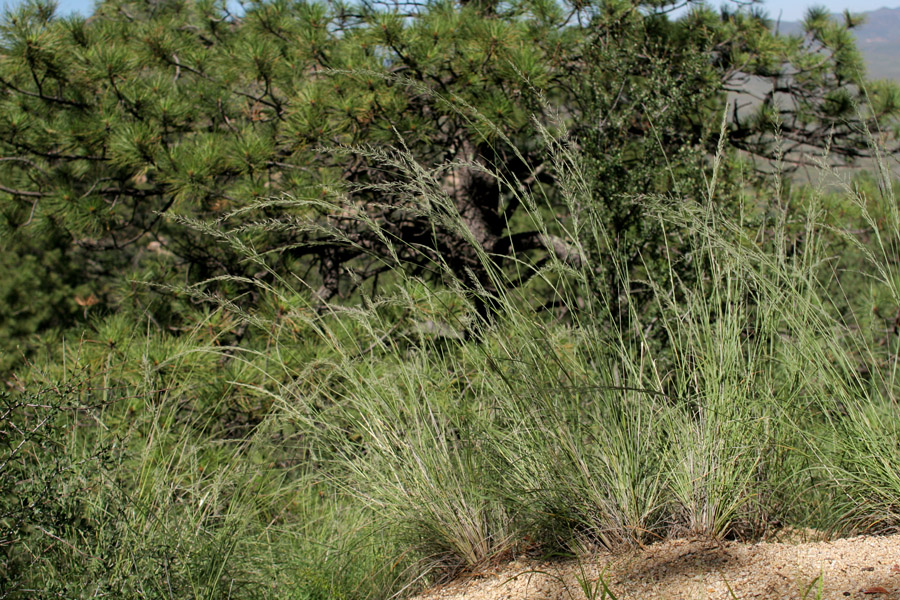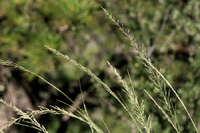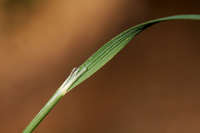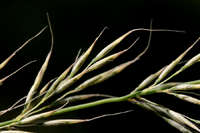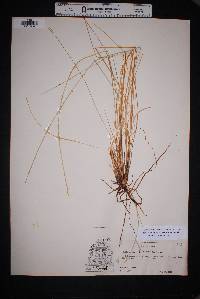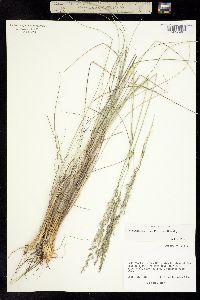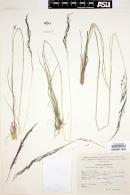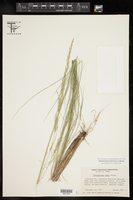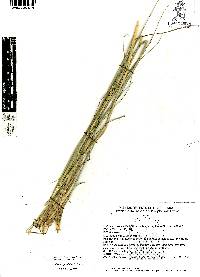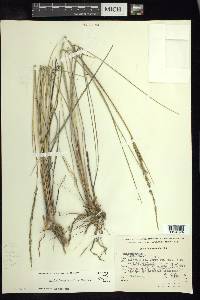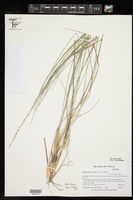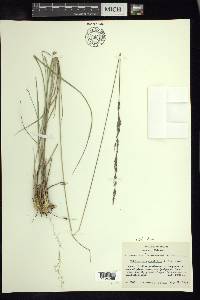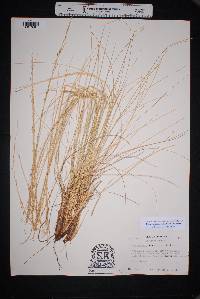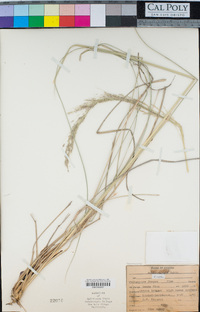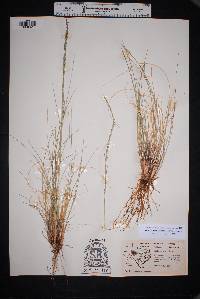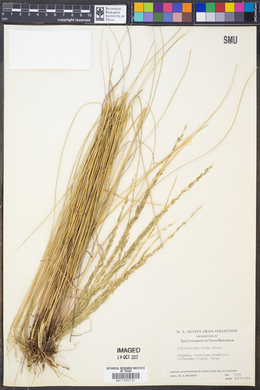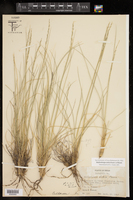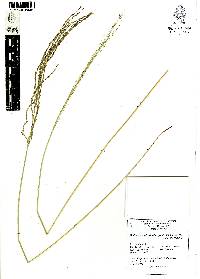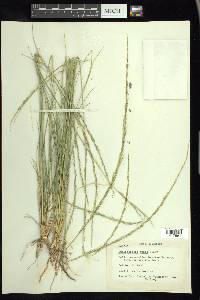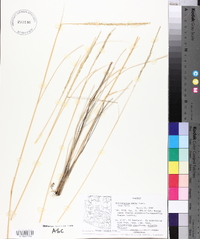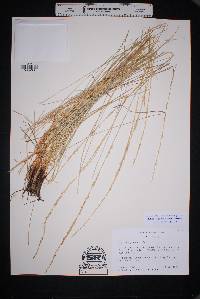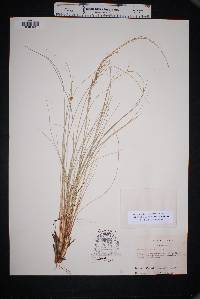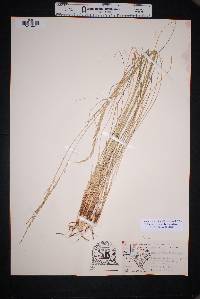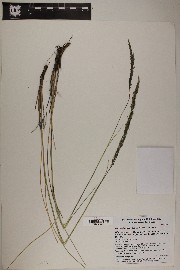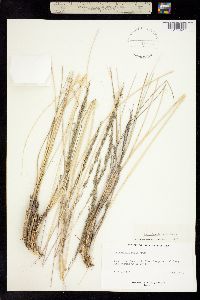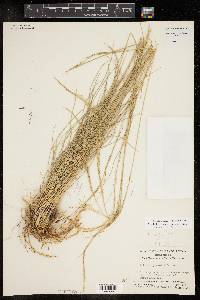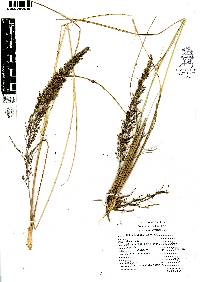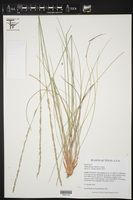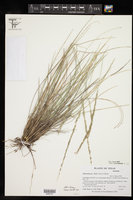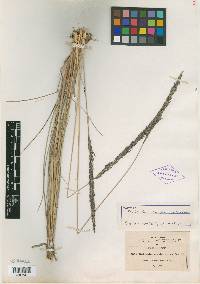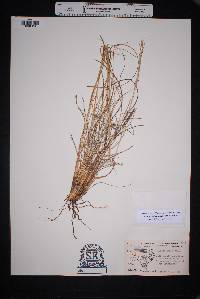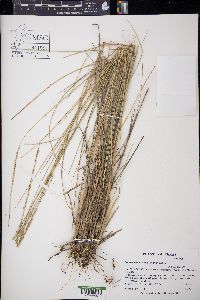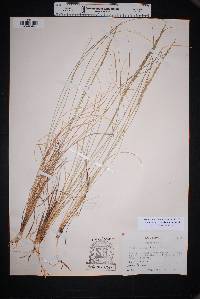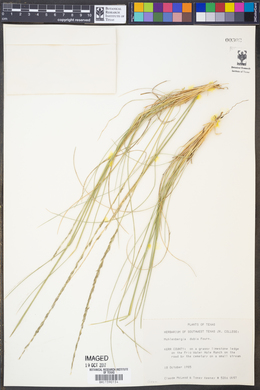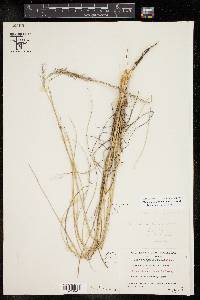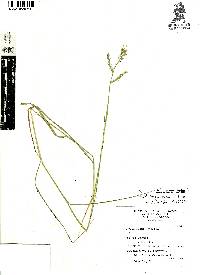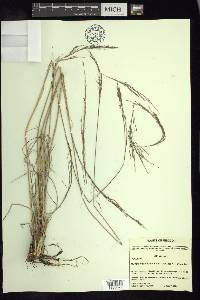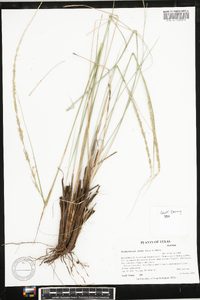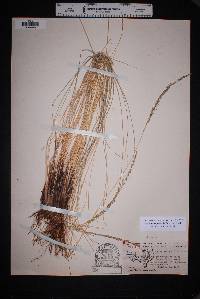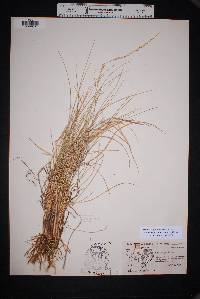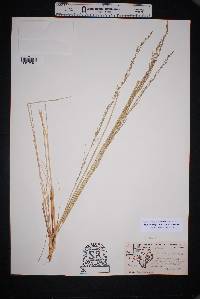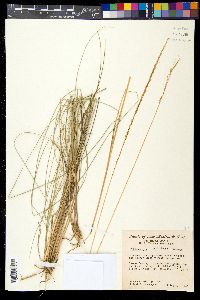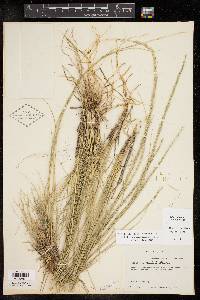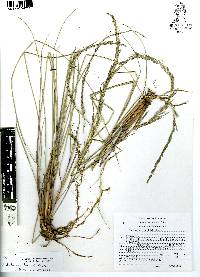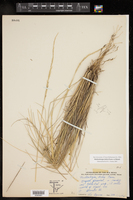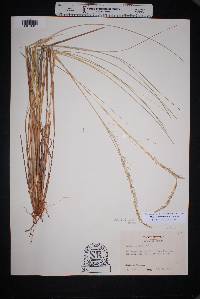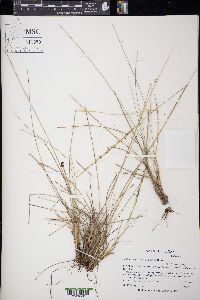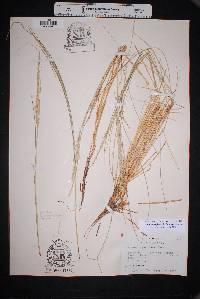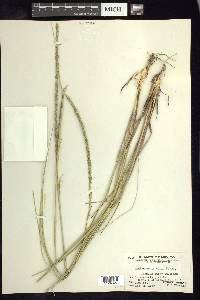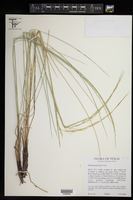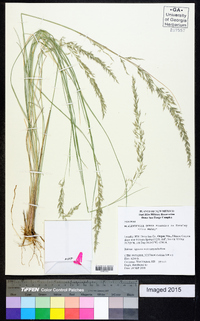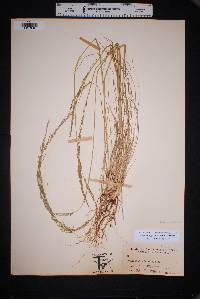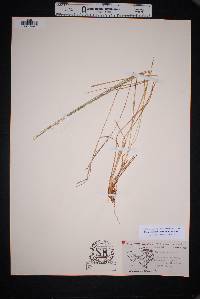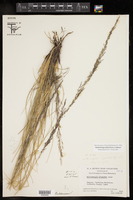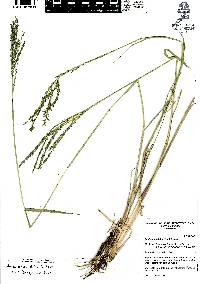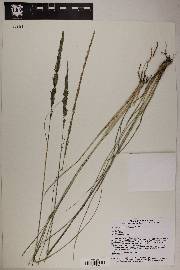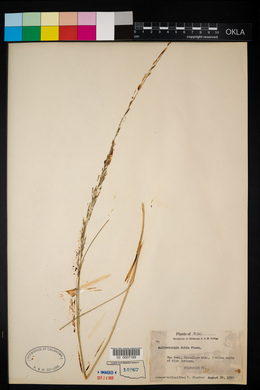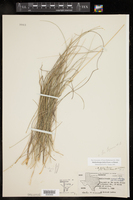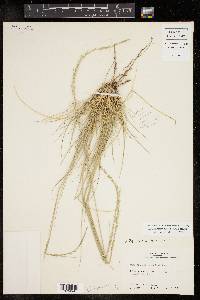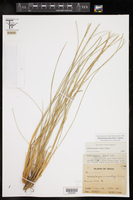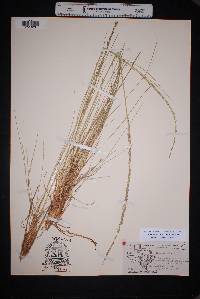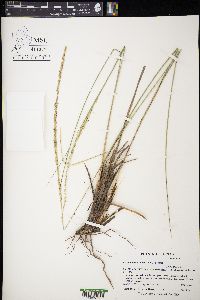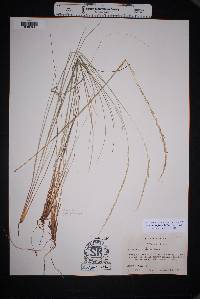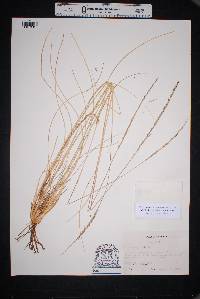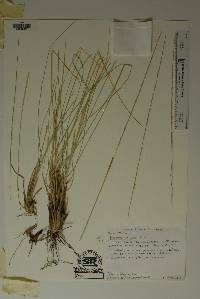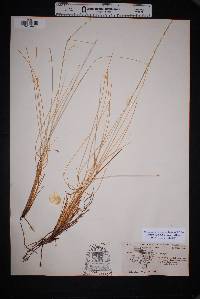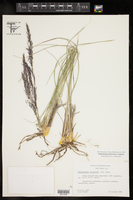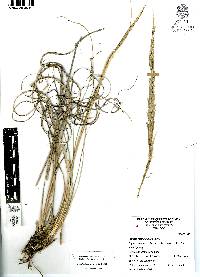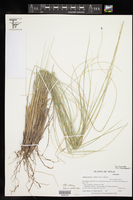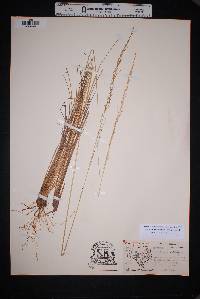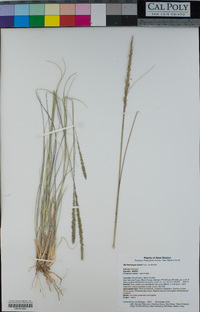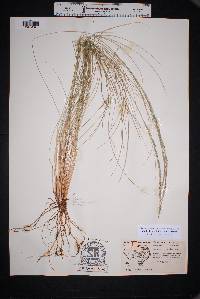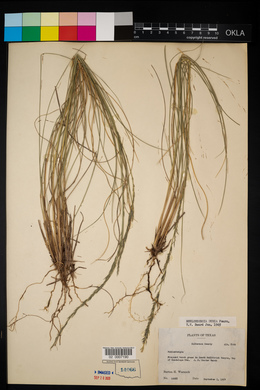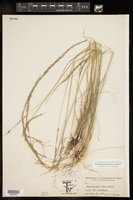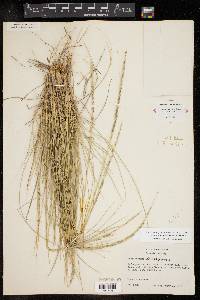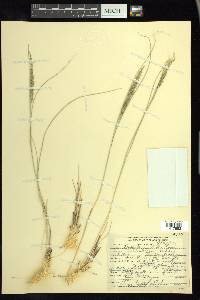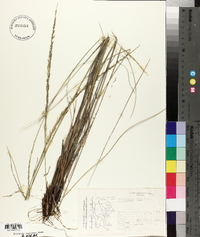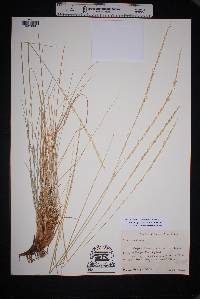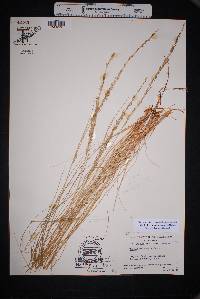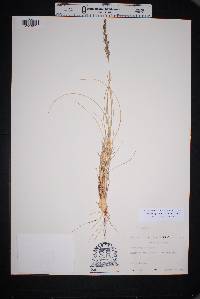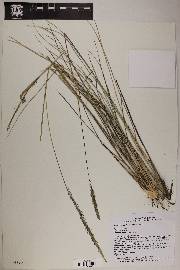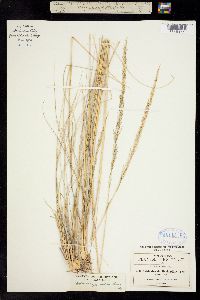
|
|
|
|
Family: Poaceae
pine muhly, more...Pineland Muhly, cane muhly
[Muhlenbergia densiflora, moreSporobolus inflatus Vasey & L.H. Dewey ex Beal, Sporobolus ligulatus Vasey & L.H. Dewey] |
Plants perennial; densely cespitose, not rhizomatous. Culms 30-100 cm, erect, rounded near the base, not rooting at the lower nodes; internodes glabrous for most of their length, minutely pubescent to hirtellous below the nodes. Sheaths longer than the internodes, smooth or scabridulous, not becoming spirally coiled when old; ligules 4-10 mm, membranous, firm, acute, lacerate; blades 10-60 cm long, 1-2 mm wide, usually involute (occasionally flat), scabrous abaxially, hispidulous adaxially. Panicles 10-40 cm long, 0.6-2.4 cm wide, contracted, grayish-green; primary branches 0.2-7 cm, diverging up to 40° from the rachises, stiff, spikelet-bearing to the base; pedicels 0.1-6 mm, strongly divergent, hispidulous. Spikelets 3.8-5 mm, grayish-green. Glumes equal, (1.8)2-3 mm, shorter than the florets, glabrous and smooth proximally, scabridulous distally, faintly 1-veined, acute; lemmas 3.8-5 mm, narrowly lanceolate, calluses hairy, hairs to 0.5 mm, lemma bodies glabrous and smooth below, scabrous distally, apices acuminate, unawned or awned, awns to 6 mm, straight; paleas 3.8-5 mm, narrowly lanceolate, glabrous below, acuminate; anthers 1.5-2.2 mm, greenish. Caryopses 2.5-3.5 mm, fusiform, brownish. 2n = 40, 50. Muhlenbergia dubia grows on steep slopes, ridge tops, limestone rock outcrops, and along draws, at elevations of 1500-2300 m. Its range extends into northern Mexico. It resembles M. rigens but differs in having looser, contracted (but not spikelike) panicles, longer ligules, olivaceous anthers, and generally longer lemmas. FNA 2003, Gould 1980 Common Name: pine muhly Duration: Perennial Nativity: Native Lifeform: Graminoid General: Densely tufted perennial with stems 30-100 cm, rounded near the base, with glabrous internodes for most of their length, sheaths longer than internodes, smooth to minutely roughened, lower ones loose and overlapping. Vegetative: Blades elongate, 10-60 cm long, 1-2 mm wide, usually involute but rarely flat, scabrous below, hispidulous above, ligules 4-10 mm, membranous, firm, acute to lacerate. Inflorescence: Narrow contracted and spicate panicle 10-40 cm long, 0.6-2.4 cm wide, grayish-green, often included in upper sheath, lower branches closely appressed, 0.5-7 cm, can diverge up to 40 degrees, stiff, spikelet bearing to the base, pedicels 0.1-6 mm, strongly divergent, hispidulous with grayish green spikelets 3.5-5 mm; glumes equal, 2-3 mm, shorter than the florets, glabrous and smooth below, minutely roughened above, 1-veined, acute; lemmas 3.5-5 mm, narrowly lanceolate, hairs to 0.5 mm, lemma bodies glabrous and smooth below, apices acuminate, unawned to awned with straight awns to 6 mm. Ecology: Found on slopes, along draws and on ridgetop, occasionally on limestone soils from 5,000-7,500 ft (1524-2286 m); flowers August-October. Notes: This large bunchgrass appears to be a smaller and higher elevation look alike of M. rigens with its spicate inflorescence. Is distinctive with its many small florets on the contracted spicate panicle. Ethnobotany: Unknown Etymology: Muhlenbergia is named for Gotthilf Heinrich Ernst Muhlenberg (1753-1815) a clergyman and botanist from Pennsylvania; dubia means doubtful or not conforming to a pattern. Synonyms: None Editor: SBuckley, 2010 |

